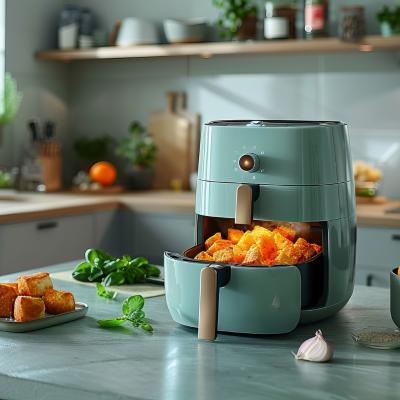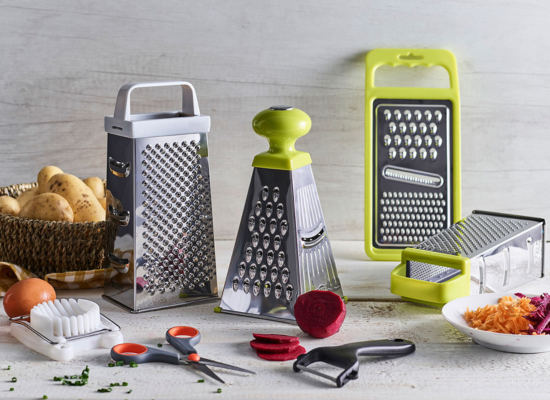
If you’re in the market for a new oven, you may be wondering if a microwave oven or halogen oven is the best option for you. These types of ovens have their pros and cons, so it can be challenging to decide which one is right for your needs.
This blog post will compare microwave and halogen ovens to help you make the best decision possible!
What is the difference between a halogen oven and a microwave oven?
A halogen oven is an oven that utilizes a halogen lamp as its heating element in the form of Halogenesis. On the flip side, a microwave oven uses microwave radiation to heat food with frequencies between 2.4 and 2.5 GHz.
Halogen ovens can reach much higher temperatures than microwave ovens. They can also cook food more evenly and are better at crisping up potatoes or chicken. However, microwave ovens have their benefits. They are smaller, lighter, and cheaper than halogen ovens.
Quick Comparison Between Halogen Oven and Microwave Oven
| Issues | Microwave Oven | Halogen Oven |
| Cooking Time | Longer (more than 22 mins for beef ribs) | Shorter (about 20 mins for beef ribs) |
| Food Health | A few nutrition molecules can decay | retain food nutrients |
| Cleaning | Need more cautions to clean | Easy to clean |
| Taste | May imbalance taste | Taste considerably better, keep food moist and delicious |
| Defrosting/Thawing | Unhealthy, germs may grow | Healthy and quick |
| Food to Cook | Ideal for cooking food that is covered or wrapped | Can cook unwrapped food |
| Cost | Cheap, starts from $50 | More costly, starts from $70 |
| Power Consumption | 1.2kWh per hour | 1.2kWh per hour |
| Lifespan | 7 years | 12 years |
Halogen Oven Cooks Faster Than Microwave Oven
Generally, halogen ovens are faster than microwaves. Halogen ovens cook food using direct heat, whereas microwave cooking relies on radiation to penetrate the food. This means that microwave cooking takes longer because it has to travel through the food before heating.
The direct heat from the halogen oven cooks faster because it doesn’t have to travel through the food as microwave radiation does. This also means that there is no need for a turntable in a halogen oven, saving you some time when cooking.
The advantages of a halogen oven make it far superior to a conventional range in terms of speed and efficiency. Halogen ovens cook food up to three times faster than traditional ranges.
Beef ribs, for example, can be prepared in 20 minutes. Simple fruit-based desserts may be cooked rapidly and effectively.
The microwave oven produces heat by sending microwave radiation through the food. The microwaves cause the water molecules in the food to vibrate, producing heat. This heat cooks the food from the inside out, but it can also have uneven heating.
Halogen Oven Kills Germs Microwave Oven Can Retain Nutritional Values
A halogen oven is a glass bowl with a lid that contains a fan and halogen bulbs. When switched on, the halogen bulbs emit beams of infrared radiation (or, more precisely, far-infrared), generating heat.
When food is exposed to infrared rays, it absorbs a substantial amount of energy in a short period.
In food, infrared destroys bacteria, spores, yeast, and mold in liquid and solid foods as thermal disinfection. Infrared disinfection may extend the shelf life of freshly baked bread without the need for preservatives. It can also be utilized to dry vegetables for long-term storage.
Water molecules and organic chemicals such as proteins, fats, and starches are vibrated/rotated by the energy, giving food a brown and crispy surface.
When foods are exposed to heat, some nutrients break down. Vitamin C is an excellent case in point. However, because microwave cooking times are shorter, utilizing a microwave better preserves vitamin C and other antioxidants that decompose when heated.
LEARN MORE: Can You Microwave Cardboard Cups?
Halogen Oven Defrosting Is Ideal Avoid Microwave Defrosting
Halogen oven defrosting is a great way to quickly and evenly thaw food. The halogen oven will heat the frozen food from all sides, so there is no need to flip or turn it over. This prevents the food from becoming freezer burned.
In addition, because the halogen oven circulates hot air around the food, it dries out the food more quickly than microwave defrosting. This is a good thing because it helps kill any bacteria that may be present in the food.
Microwave defrosting isn’t a good idea since it may cause food to cook unevenly. Another issue is that the microwave transports the uncooked meal into the “risk zone,” which ranges between 40 and 140 degrees Fahrenheit.
You can certainly cook your meal at a high temperature, but if it remains in the danger zone for too long, any germs that may be present within will multiply. This implies that meat is now capable of causing illness among anybody who eats it.
LEARN MORE: Can You Put Paper Towels in the Microwave?
Food to Cook in Halogen Oven and Microwave Oven
There is a lot of food that can be cooked in a halogen oven. You can cook meat, poultry, fish, vegetables, rice, pasta and more. The great thing about the halogen oven is that you don’t need any extra dishes or pots and pans since it comes with its baking tray and trivet.
One of the most significant advantages of using a halogen oven is that meals taste considerably better than they do in many other types of cookers, such as microwave ovens.
Meat and poultry are brown and crispy outside while remaining incredibly moist and delicious when cooked in a halogen oven.
There are many benefits to using a halogen oven for your next barbecue, including moisture retention. Hot air passes over the food with a regular convection grill and removes its moisture and juices.
Certain foods are better cooked in a microwave oven than others. Microwave ovens are ideal for cooking food covered or wrapped in plastic. This includes meats, fish, vegetables, and fruits.
Microwaves are not as good for cooking food that is not wrapped or covered. This includes dishes such as casseroles and lasagna. These types of food should be cooked in a steam oven or oven.
LEARN MORE: Can You Use Wax Paper in the Microwave?
Maintenance of Halogen Ovens and Microwave Ovens
Halogen ovens are very easy to maintain and clean. The halogen bulbs can last up to 2000 hours, and the fan motor has a life expectancy of around 10000 hours.
The glass bowl is dishwasher safe, or it can be cleaned with soapy water and a sponge. The lid should be wiped down with a damp cloth.
The baking tray and trivet can also be washed or with soapy water in the dishwasher. Please make sure that they are scorched before putting them away.
Microwave ovens are a little more challenging to clean than halogen ovens. The exterior of the microwave can be cleaned with a damp cloth, but the interior should never be wet. The turntable and glass tray should be washed in hot, soapy water and dried thoroughly.
The microwave filters should also be cleaned regularly with warm water and soap. To clean the microwave keypad, use a solution of vinegar and water. Please do not use harsh chemicals or abrasive cleaners to damage the microwave.
LEARN MORE: Can You Put Paper Plates In The Microwave?
Prices and Running Costs of Halogen Oven and Microwave Oven
The price of a halogen oven starts from around $70 and can go up to $250 if you want some more hi-tech. The microwave ovens are slightly cheaper, and the cost starts from about $50. Microwaves with extra features and specialized versions are available for as much as $1,000 or more!
Although halogen ovens are more expensive to buy, they are cheaper to run than microwave ovens.
Typical halogen ovens and microwave ovens consume 1.2kWh, an annual bill of around $25. Due to less cooking time with a halogen lamp, its running cost is lower than cooking with a microwave oven.
Halogen ovens do not require any other maintenance costs, whereas microwave ovens have filters that need to be replaced every six months at the expense of $15.
This brings the annual cost of owning and using a microwave oven to around $60. If you frequently cook with your microwave oven, then the price of replacement filters can be high.
You should also factor in the cost of replacement light bulbs for your halogen oven, which is about $15 per three to six months. A bulb should last about four months based on usage of eight hours a day. The bulbs are supposed to last longer, but this is not always the case.
A microwave oven will generally last around seven years with regular use, significantly less heavy usage, and poor maintenance. As families become more reliant on their microwave to warm snacks and leftovers or defrost meals, they may replace it every four to five years.
On the other hand, a halogen oven can last around 12 years with regular use and excellent maintenance.
LEARN MORE: How Long To Microwave Hot Pocket
Conclusion: What Is the Difference Between a Halogen Oven and a Microwave Oven?
Halogen ovens are the better option when compared to microwave ovens. They are easier to clean, have a longer lifespan, and produce better-tasting food. Halogen ovens also cost less to operate than microwave ovens.
Although halogen ovens are more expensive to purchase, they offer good value in the long run.



